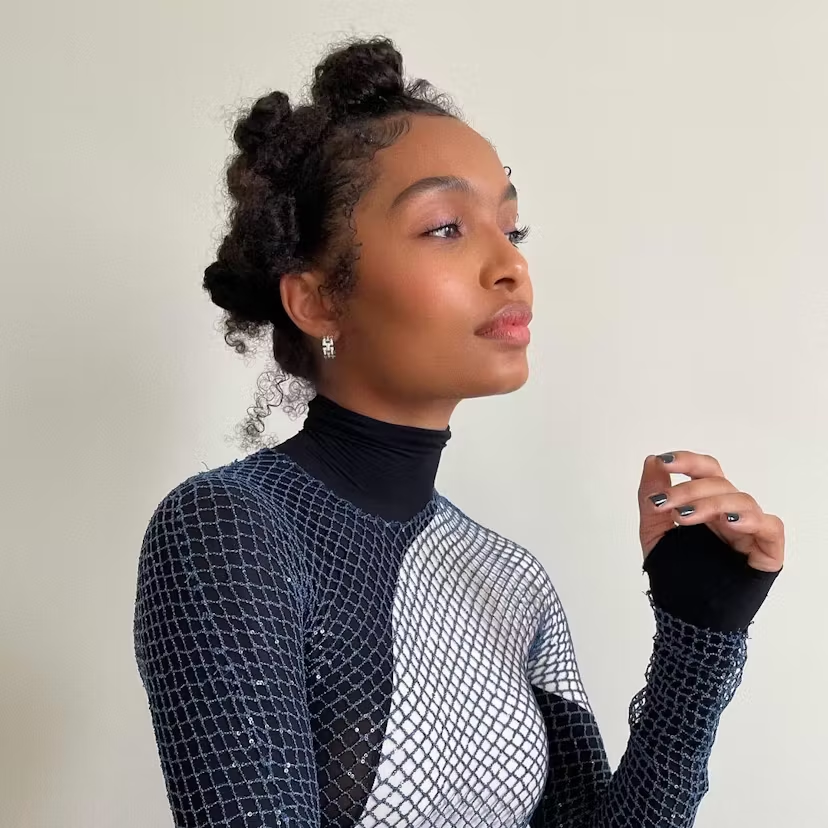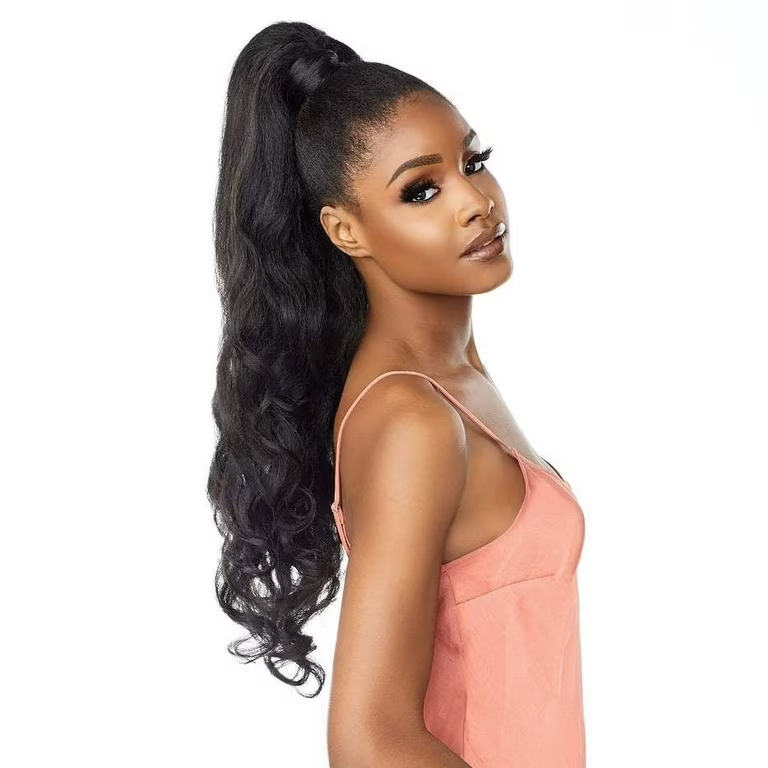
Bantu Knots Hairstyle: History, Styling, and Cultural Significance
What Are Bantu Knots Hairstyle?
Bantu knots represent a traditional African hairstyle that has gained popularity worldwide for its versatility and cultural significance. This protective hairstyle involves sectioning the hair into small, square-shaped parts and twisting each section into a compact, coiled knot secured close to the scalp. The name “Bantu” refers to the over 300 ethnic groups in Africa who speak Bantu languages, highlighting the style’s deep roots in African culture.
Bantu knots serve both practical and aesthetic purposes, protecting the hair from damage while creating a striking, textured appearance. The size and number of knots can vary, allowing for personalization based on hair length, thickness, and desired outcome. When worn as a finished style, Bantu knots create a bold, eye-catching look that celebrates natural hair textures. Additionally, many people use Bantu knots as a technique to create beautiful, defined curls or waves when unraveled, showcasing the style’s versatility.

The Rich History of Bantu Knots
Bantu knots boast a rich history dating back centuries in various African cultures. The style originated as a practical way to maintain and protect natural hair textures in harsh climates. Different African ethnic groups developed variations of the style, often incorporating unique elements that reflected their cultural identities. In some communities, the arrangement and number of knots held symbolic meaning, indicating a person’s age, marital status, or social position.
As African people were forcibly displaced through the slave trade. Bantu knots and other traditional hairstyles traveled with them, evolving and adapting in new environments. Throughout history, Bantu knots have served as a form of cultural expression and resistance against Eurocentric beauty standards. In recent decades, the style has experienced a resurgence in popularity, embraced by people of African descent worldwide as a celebration of heritage and natural hair. The enduring presence of Bantu knots in fashion, music, and popular culture testifies to the style’s cultural significance and timeless appeal.
How to Create Bantu Knots
Creating Bantu knots requires patience and precision but yields stunning results. Begin with clean, detangled hair for the best outcome. Section the hair into square or triangular parts using a rat-tail comb, securing each section with a small elastic band. The size of the sections determines the final number and size of the knots. Apply a moisturizing leave-in conditioner or styling cream to each section to enhance manageability and define the hair’s natural texture. Take one section and twist it tightly from root to tip, allowing the hair to coil around itself as you twist.
Once fully twisted, wrap the coiled hair around its base to form a compact knot. Secure the knot by tucking the ends underneath or using bobby pins for added hold. Repeat this process for each section until the entire head is covered in knots. For a sleeker finish, apply edge control or gel to smooth down any flyaways around the hairline. Allow the knots to dry completely, either air-drying overnight or using a hooded dryer for faster results. With practice, creating Bantu knots becomes easier, allowing for experimentation with different sizes, patterns, and styling techniques.

Styling Variations and Creative Expressions
Bantu knots offer numerous styling variations that allow for creative expression and personalization. The classic all-over Bantu knot style creates a bold, textured look perfect for making a statement. For a more subtle approach, try creating a half-up, half-down style by forming knots only on the top or front section of the head. Experiment with different knot sizes, mixing large and small knots for an eclectic, eye-catching appearance. Incorporate braids or twists between knots to add complexity and visual interest to the style.
For special occasions, adorn Bantu knots with beads, cowrie shells, or metallic cuffs to elevate the look. Play with parting patterns, creating geometric shapes or swirls between knots for added flair. Color enthusiasts can experiment with temporary hair colors or highlights to accentuate the knots’ texture and dimension. For a modern twist, try the “Bantu knot-out” by unraveling the knots after they’ve set, resulting in defined, springy curls. These styling variations demonstrate the versatility of Bantu knots, allowing wearers to express their individuality while honoring the style’s cultural roots.
Benefits of Wearing Bantu Knots
Bantu knots offer numerous benefits beyond their aesthetic appeal. As a protective style, Bantu knots help minimize manipulation of the hair, reducing breakage and promoting length retention. The coiled structure of the knots keeps the ends of the hair tucked away, protecting them from environmental damage and friction. This protection proves particularly beneficial for those with fragile or damage-prone hair types. Bantu knots work well as a low-maintenance style, lasting for several days with proper care and allowing for easy touch-ups.
The style’s versatility shines through its ability to create beautiful curl patterns when unraveled, offering two distinct looks in one. For individuals transitioning from chemically straightened to natural hair, Bantu knots provide an excellent way to blend different textures seamlessly. The style also promotes healthy hair growth by allowing the scalp to breathe and reducing tension on the hair follicles. Additionally, Bantu knots serve as an excellent foundation for wig-wearing, providing a flat, secure base that protects the natural hair underneath.

Maintaining and Preserving Bantu Knots Hairstyle
Proper maintenance ensures that Bantu knots remain neat and stylish for an extended period. Protect the style while sleeping by covering the hair with a silk or satin scarf or bonnet. Which helps reduce friction and maintain moisture. For added protection, sleep on a silk or satin pillowcase to minimize frizz and preserve the knots’ shape. Refresh the style as needed by applying a light moisturizing spray or leave-in conditioner, focusing on the roots and any dry areas. Gently re-twist and secure any loosened knots to maintain a polished appearance.
Avoid over-manipulating the hair to prevent frizz and maintain the style’s integrity. For individuals with drier hair types, consider using a light oil to seal in moisture and add shine to the knots. When washing becomes necessary, focus on cleansing the scalp between knots using a diluted shampoo or cleansing conditioner applied with an applicator bottle. Rinse thoroughly and allow the hair to dry completely before restyling or unraveling the knots. With proper care, Bantu knots can last anywhere from a few days to two weeks, depending on hair type and lifestyle factors.
Cultural Appropriation vs. Appreciation
The increased popularity of Bantu knots in mainstream fashion has sparked important discussions about cultural appropriation versus appreciation. Cultural appropriation occurs when elements of a marginalized culture are adopted by members of a dominant culture without proper understanding, respect, or credit. This issue becomes particularly sensitive with hairstyles like Bantu knots, which hold deep cultural significance for people of African descent. To appreciate rather than appropriate Bantu knots, individuals should educate themselves on the style’s history and cultural importance.
Acknowledge the origins of the hairstyle and give credit to its cultural roots when showcasing or discussing the style. Support Black-owned businesses and hairstylists who specialize in traditional African hairstyles. Recognize that for many people of African descent, Bantu knots represent more than just a fashion choice; they embody cultural identity, resistance, and pride. By approaching Bantu knots with respect, understanding, and proper attribution, individuals can celebrate this beautiful hairstyle while honoring its cultural significance.

Adapting Bantu Knots for Different Hair Types and Textures
While traditionally associated with tightly coiled or kinky hair textures, Bantu knots can be adapted for various hair types with some modifications. For individuals with looser curl patterns or straight hair, creating Bantu knots may require additional steps to achieve a similar effect. Start by applying a strong-hold styling product to damp hair to enhance grip and definition. Consider braiding or twisting each section before coiling it into a knot to provide extra hold and texture. Those with fine or slippery hair textures might benefit from using small elastic bands to secure the base of each knot.
For very long hair, try creating larger, fewer knots to manage the length more easily. People with thin or fine hair can create the illusion of fuller knots by gently teasing each section before twisting. Individuals with thick, coarse hair might prefer larger knots to reduce styling time and minimize tension on the scalp. Regardless of hair type, practicing proper moisturizing and sealing techniques ensures the best results when creating Bantu knots. By adapting the technique to suit different hair textures. People of all backgrounds can enjoy the versatility and beauty of this iconic hairstyle.
The Future of Bantu Knots Hairstyle in Hair Fashion
As natural hair movements continue to gain momentum worldwide, Bantu knots are poised to remain a significant trend in hair fashion. The style’s versatility and cultural significance ensure its enduring appeal across generations and communities. Expect to see innovative adaptations of Bantu knots, incorporating new techniques, colors, and accessories to create fresh, modern looks. The beauty industry may develop specialized products tailored specifically for creating and maintaining Bantu knots, catering to the growing demand for natural hairstyling options.
Virtual reality and augmented reality technologies could revolutionize how people learn to create Bantu knots, offering interactive tutorials and personalized styling advice. As conversations around cultural appreciation and diversity in beauty standards evolve. Bantu knots will likely play a crucial role in promoting inclusivity in the fashion and beauty industries. The style’s presence in mainstream media and popular culture is expected to increase, further cementing its status as a iconic and beloved hairstyle. By embracing the rich history and cultural significance of Bantu knots while allowing for creative evolution, this timeless hairstyle will continue to inspire and empower individuals around the world for generations to come.

